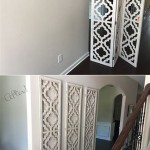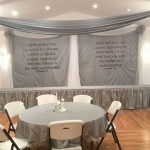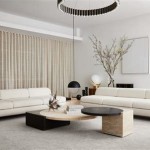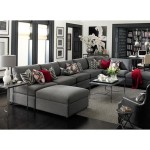Decorating Your Home: Ideas and Inspiration
Decorating a home can be a daunting task. From choosing a color palette to selecting furniture and accessories, the options are seemingly endless. This article provides a comprehensive guide to navigating the decorating process, offering practical advice and inspiring ideas for transforming any living space.
Establishing a Foundation
Before diving into specific decorating choices, it is crucial to establish a solid foundation. This begins with determining the overall style direction. Researching different design aesthetics, such as modern, traditional, minimalist, or bohemian, can help clarify personal preferences. Creating a mood board with images, fabrics, and color swatches can further solidify the desired look and feel.
The Power of Color
Color plays a pivotal role in setting the tone and atmosphere of a room. Understanding the psychological impact of different colors can help inform design choices. For example, cool colors like blue and green promote tranquility and relaxation, while warm colors like red and yellow evoke energy and excitement. Neutral colors such as white, gray, and beige create a versatile backdrop and can be easily paired with bolder accent colors.
Furniture Selection and Arrangement
Furniture should be both functional and aesthetically pleasing. Careful consideration should be given to the size and scale of furniture pieces in relation to the room's dimensions. Oversized furniture can overwhelm a small space, while undersized furniture can make a large room feel empty. Arranging furniture strategically can optimize traffic flow and create distinct zones for different activities, such as conversation or relaxation.
Lighting: Setting the Mood
Lighting is a crucial yet often overlooked element of interior design. Layering different types of lighting can create depth and dimension. Ambient lighting provides overall illumination, while task lighting is directed towards specific areas for activities like reading or cooking. Accent lighting highlights architectural features or artwork, adding visual interest and drama.
Textiles: Adding Texture and Warmth
Textiles, such as rugs, curtains, and throw pillows, introduce texture, warmth, and personality to a space. Choosing fabrics with varying textures and patterns can create visual interest and depth. Rugs can define different areas within a room and anchor furniture groupings. Curtains provide privacy and control natural light, while throw pillows and blankets add comfort and pops of color.
Accessorizing with Intention
Accessories are the finishing touches that personalize a space and reflect individual style. Artwork, decorative objects, plants, and books can add visual interest and create a sense of personality. When choosing accessories, it's essential to consider scale, proportion, and balance. Grouping smaller items together can create a more impactful display than scattering them throughout the room.
Wall Decor: Making a Statement
Walls provide a blank canvas for self-expression. Paint, wallpaper, and artwork can transform a space and create a focal point. Large-scale artwork can make a bold statement, while a gallery wall of smaller prints can create a curated and eclectic look. Mirrors can be used to reflect light and create the illusion of more space.
Window Treatments: Framing the View
Window treatments not only provide privacy and light control but also contribute to the overall aesthetic of a room. The choice of window treatments should complement the existing decor and the architectural style of the home. Options range from simple blinds and shades to elaborate drapes and valances.
Creating Functional Spaces
When decorating, it's essential to consider the functionality of each space. A well-designed room should be both aesthetically pleasing and practical. For example, a living room should be conducive to conversation and relaxation, while a kitchen should be efficient and easy to navigate.
Embracing Personal Style
Ultimately, the most successful decorating projects reflect the personality and lifestyle of the homeowner. While following design principles and trends can be helpful, it's important to prioritize personal preferences and create a space that feels authentic and comfortable. Experimenting with different styles and incorporating meaningful objects can help cultivate a unique and inviting home environment.
Budgeting and Planning
Before embarking on any decorating project, it's essential to establish a realistic budget. Prioritizing needs and wants can help allocate funds effectively. Creating a detailed plan outlining the scope of the project, including materials, labor, and timelines, can prevent costly overruns and ensure a smooth and efficient process.
Maintenance and Upkeep
Once a space is decorated, regular maintenance is essential to preserve its appearance and functionality. Regular cleaning, dusting, and vacuuming can prevent dirt and grime from accumulating. Periodically rearranging furniture and accessories can refresh the look of a room and prevent it from feeling stagnant.
Seeking Professional Guidance
For complex decorating projects, seeking the advice of a professional interior designer can be invaluable. A designer can provide expert guidance on space planning, color selection, furniture selection, and accessorizing. They can also assist with project management and ensure that the project stays within budget and on schedule.

60 Easy And Chic Home Decor Ideas To Try From Designers

25 Stunning Ideas To Decorate Rooms In Your Home

9 Ways To Minimalist Decor That Will Make Your Home Clutter Free

13 Creative Home Decor Ideas Design Cafe

60 Easy And Chic Home Decor Ideas To Try From Designers

Designing And Decorating A Room On Budget Designcafe

Low Budget Home Design Affordable Decor Ideas For Every

44 Best Spring Decor Ideas To Freshen Your Home

8 Of The Best Home Decor Essentials To Have On Hand Little House Four Creating A Beautiful One Thrifty Project At Time

21 Antique Vintage Home Decor Ideas Extra Space Storage
Related Posts







